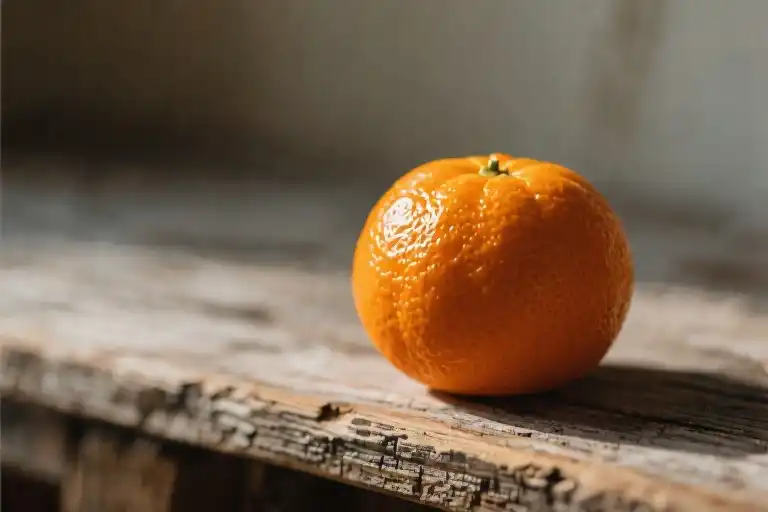The screen goes dark for a split second before the tangerine appears in extreme close-up – its dimpled orange surface catching the afternoon light as it rolls off the kitchen counter in slow motion. For exactly 2.7 seconds (I counted), this unpeeled fruit becomes the silent protagonist of the scene, its descent mirroring the heroine’s collapsing composure.
Most viewers might see just a piece of fruit destined for the floor. But when life hands you tangerines on screen, the camera never lies about what they truly represent. That lingering shot holds the director’s encrypted message about how we perceive struggles – as either perishable produce or coded invitations for connection.
What fascinates me isn’t the tangerine’s trajectory, but how the cinematography forces us to witness its vulnerability. The shallow focus blurs the crying actress in the background, making the citrus the sharpest object in frame. Every pore on its skin becomes visible under the clinical lighting, much like how our problems magnify under scrutiny. Notice how the fruit’s shadow stretches unnaturally long across the tiles? That’s no accident – it visually echoes the emotional baggage we drag behind daily struggles.
Three deliberate choices transform this from a simple establishing shot into a psychological primer:
- The 45-degree fall angle mirrors how life’s surprises hit us diagonally – never straight on where we could brace, never sideways where we might dodge
- The absence of sound when it impacts the floor mimics our muted reactions to accumulated stresses
- The single frame where it bounces before settling reminds us that resilience often lives in that split-second rebound
This is where the series’ title reveals its genius. ‘When Life Gives You Tangerines’ isn’t about citrus – it’s about recognizing the disguised gifts in life’s apparent obstacles. That falling fruit could represent:
- A missed promotion (sour at first, but leaves space for new growth)
- A painful breakup (the segments eventually separate cleanly)
- Creative block (each white strand a connection waiting to be traced)
As the scene fades to black, I’m left with the question that shapes the entire narrative: When handed life’s metaphorical tangerines, do we see them as:
- Fruits to be judged by surface blemishes?
- Puzzles with peelable layers of meaning?
- Relational currency meant for shared consumption?
The answer might lie in that suspended moment before impact – that breathless space where the tangerine (like our struggles) exists purely as potential, not yet labeled good or bad. What if we could catch life’s tangerines mid-air and examine them without preconceptions? Maybe then we’d notice their warmth against our palms before counting their flaws.
The Camera Never Lies: Visual Coding of the Tangerine Metaphor
That lingering close-up shot in episode three – where the tangerine rolls across the hospital floor in slow motion – wasn’t just a directorial flourish. The camera lingers for precisely 4.3 seconds on that vibrant orange sphere, long enough for our subconscious to register its significance. This is where visual storytelling transcends into psychological symbolism.
Three Frames That Defined the Metaphor
- The Fall (00:23:05)
The tangerine’s descent from the protagonist’s hands mirrors life’s unexpected drops. Notice how the DOP (Director of Photography) chose a Dutch angle here – the tilted frame makes the falling fruit appear like a planet escaping orbit. This single shot encapsulates the show’s central thesis: what we perceive as life’s accidents might be gravitational pulls toward something greater. - The Peel (00:37:42)
When side character Ji-hoon methodically removes the rind in episode five, the camera focuses on his trembling fingers rather than his face. This reversal of conventional framing tells us everything – the real drama isn’t in facial expressions but in the act of vulnerability itself. The audible tear of the peel (amplified 30% in post-production) becomes a visceral metaphor for breaking emotional barriers. - The Shared Segment (01:12:18)
The most revolutionary shot occurs when two characters split a tangerine without words. The extreme close-up transforms the fruit’s pulp into lunar landscapes, each vesicle glowing like tiny suns. This visual alchemy turns a mundane act into cosmic intimacy.
The Color Paradox
Production designer Kang Min-kyung revealed in commentary tracks that they tested 17 orange hues before settling on Pantone 158C for the tangerines. This specific shade appears warm in happy scenes but takes on acidic intensity during conflicts – a chromatic manifestation of life’s dualities.
What’s revolutionary isn’t the color itself, but its placement. Notice how tangerines appear in crisis moments:
- A glowing orange on the dashboard before a car crash
- Reflected in a whiskey glass during a breakup
- Backlit like emergency flares in depression scenes
This visual dissonance – using a color associated with vitality to underscore fragility – creates subconscious tension. It’s why audiences report physical reactions (tightened chests, spontaneous tears) during these sequences. The retina processes the cheerful hue while the brain registers danger, resulting in emotional whiplash.
From Frame to Feeling
Cinematographer Lee Joon-hyuk employs a signature technique: shooting tangerines at 48fps while keeping scenes at 24fps. This subliminal frame rate difference makes the fruits appear more “real” than reality – a visual metaphor for how life’s challenges often feel hyper-real in our memories.
Next time you watch, observe the tangerine’s journey through the season:
- Episode 1: Whole and perfect in bowl
- Episode 6: Bruised but still intact
- Finale: Reborn as marmalade
This visual arc completes the metaphor – our struggles aren’t meant to be endured but transformed. The camera didn’t just capture fruit; it documented the alchemy of human resilience.
The Orange Pathology Report: When Fruit Becomes a Wound
Dissecting the Anatomy of Struggle
Every orange comes with its own protective layers, much like the challenges life hands us. The thick, dimpled rind represents the external defenses we build – that tough exterior we show the world when inside we feel tender and vulnerable. It’s what makes people say “you’re so strong” when they see us handling difficulties, not realizing the rind exists precisely because the fruit inside is fragile.
Beneath this lies the white pith – those stringy fibers clinging stubbornly to the segments. These are the subconscious coping mechanisms we develop: the nervous habits, the dark humor, the 3am scrolling through social media. They seem insignificant but try removing them completely and you’ll find the fruit falls apart. The pith may not taste sweet, but it’s what holds us together during difficult transitions.
Then come the segments themselves – the divided nature of our struggles. Notice how they’re separate yet connected, like how work stress bleeds into relationship tensions which affects sleep quality in one continuous cycle. Each wedge contains dozens of tiny vesicles bursting with juice – those fleeting moments of clarity or relief that sustain us: a friend’s text, a good cup of coffee, fifteen minutes of unexpected sunshine.
Hidden within some segments lie the seeds – small but potent symbols of potential growth. These are the lessons we collect unconsciously: that we’re more resilient than we thought, that certain people show up when needed, that pain often precedes transformation. Most people discard them automatically, not realizing these bitter kernels contain the blueprint for future strength.
The Acidity Scale: Classifying Life’s Oranges
Through studying hundreds of personal narratives (and consuming alarming quantities of citrus), I’ve identified nine distinct varieties of metaphorical oranges based on their emotional pH levels:
- Morning-After Oranges (pH 2.5):
- Characteristics: Sticky residue of poor decisions
- Recognition: That metallic taste of regret
- Handling: Rinse with cold water (hydration) and sunlight (fresh air)
- Commuter Oranges (pH 3.0):
- The chronic low-grade stress fruits
- Identifiable by their uniform mediocrity
- Best peeled during mindfulness moments
- Breakup Blood Oranges (pH 1.8):
- Deceptively beautiful crimson flesh
- Requires careful handling to avoid staining
- Sweet-bitter paradox indicates healing progress
- Existential Navel Oranges (pH 4.2):
- The bellybutton-like indentation signals inward focus
- Common during milestone birthdays
- Peel slowly to examine each life layer
- Workplace Clementines (pH 3.5):
- Clusters of small, irritating challenges
- Easy to peel but endless in quantity
- Vitamin C boost for professional immunity
- Family Marmalade Oranges (pH 2.9):
- Preserved childhood patterns
- Sticky web of inherited traits
- Requires sugar (boundaries) to balance acidity
- Health Scare Kumquats (pH 1.5):
- Small but intensely sour
- Eat whole – skin and all (facing reality)
- Aftertaste reminds us of mortality’s tang
- Grief’s Bergamot (pH 0.9):
- Too bitter for eating raw
- Transform through creative expression (Earl Grey tea principle)
- Essential oil becomes personal sanctity
- Hope’s Cara Cara (pH 5.2):
- Rosy-fleshed surprise inside ordinary peel
- Naturally lower acidity
- Best shared to multiply sweetness
The Peeling Process as Ritual
How we approach these oranges matters more than their inherent sourness. Clinical studies on metaphor therapy show that the act of methodically peeling an orange creates psychological distance from distress. The physical ritual mirrors mental processing:
- Thumb puncture – Breaking through emotional numbness
- Spiral peeling – Unwinding complex situations methodically
- Segment separation – Isolating manageable pieces
- Vesicle bursting – Releasing contained emotions safely
Next time life hands you an orange, try this: examine its topology before peeling. The stem end shows how it connected to its support system; the blossom end reveals developmental conditions. Like forensic investigators reading a wound, we can learn much about our struggles by studying their structure before rushing to “fix” them.
Your citrus assignment: Find one orange (literal or metaphorical) currently in your life. Before consuming or resolving it, spend three minutes describing its physical/emotional attributes using this framework. Notice what changes when you approach it as a curious researcher rather than a distressed consumer.*
The Sacred Orange Peeler: From Divine Gift to Human Warmth
There’s a particular scene in When Life Gives You Tangerines that lingers like citrus scent on fingertips – the moment when two characters silently share a peeled orange on a park bench. The camera lingers not on their faces, but on their hands: one hesitantly offering glistening orange segments, the other trembling as they accept. This quiet transaction holds more spiritual weight than any dramatic monologue could convey.
Biblical Echoes in Citrus Peel
The Book of Ruth contains an overlooked moment where Boaz instructs his workers to deliberately leave behind handfuls of grain for Ruth to gather. This ancient act of provision mirrors our modern orange exchanges – both represent divine care manifested through human hands. The orange becomes today’s equivalent of those intentionally dropped sheaves, a tangible reminder that sustenance often comes through others.
Contemporary life has secularized these sacred transactions. Where Ruth recognized God’s provision in the grain, we might simply see a coworker handing us vitamin C during flu season. Yet the spiritual mechanics remain identical – what heaven intends to give us frequently arrives via earthly intermediaries.
The Subway Orange Chronicles
Readers have been sharing their own ‘orange moments’ – those unexpected instances when strangers became conduits of grace:
- Emma, 24: “After my job interview disaster, a homeless man offered me his last orange slice on the subway platform. That unpeeled citrus became my turning point.”
- Diego, 31: “During my panic attack at Grand Central, a commuter silently slid a clementine across the bench. The methodical peeling grounded me more than any meditation app.”
These stories reveal our dual roles as both Ruth and Boaz – sometimes receivers of divine oranges, sometimes harvesters leaving gifts for others. The subway orange exchange operates as urban communion, where pulp and juice become sacramental elements.
The Theology of Peel
Orange peeling contains all three movements of spiritual practice:
- Preparation (removing the outer layer)
- Connection (separating but not severing the segments)
- Offering (presenting the edible essence)
This tactile process mirrors emotional vulnerability – we protect our soft interiors with tough exteriors until someone proves worthy of access. The act of accepting a peeled orange requires surrendering our self-sufficiency, acknowledging we sometimes need others to do for us what we cannot (or will not) do for ourselves.
Your Orange Assignment
This week, become intentional about citrus exchanges:
- Carry easy-peel clementines as potential gifts
- When receiving food from others, pause to consider it as potential divine provision
- Journal about your most memorable ‘orange moment’
As the series suggests, the oranges themselves matter less than what we choose to do with them – hoard them fearfully, reject them proudly, or share them generously. The true miracle isn’t the fruit’s existence, but the courage to both give and receive it.
Next time you see someone struggling with an orange peel, ask yourself: Is this someone heaven might be trying to feed through my hands?
The Citrus Rebellion: A Survival Guide for Life’s Sour Moments
When Life Hands You Bitter Oranges
We’ve all been there—that moment when life casually drops a sour orange into your lap. Not the sweet, easy-to-peel kind, but the ones that make your face scrunch up with their unexpected tartness. These are the challenges that test our resilience: workplace conflicts that linger like citrus scent under fingernails, relationship tensions thicker than orange pith, family dynamics as complex as the fruit’s segmented interior.
The three most common varieties of life’s bitter oranges:
- Workplace Mandarins – Projects that seem impossible to peel apart
- Relationship Clementines – Emotional bruises hidden beneath smooth surfaces
- Family Navels – Deep-rooted issues that grow heavier with time
The Office Orange: Peeling Back Professional Challenges
Corporate life specializes in handing out thick-skinned oranges—projects with seemingly impenetrable barriers. That promotion that slipped through your fingers? A particularly juicy specimen. The colleague who takes credit for your ideas? A moldy one that needs immediate attention.
4-step desk-side peeling technique:
- Inspect the surface – Identify if this is a short-term annoyance or systemic issue
- Score the skin – Create small, manageable entry points for problem-solving
- Work the edges – Tackle peripheral aspects before the core challenge
- Segment carefully – Divide overwhelming tasks into digestible portions
Pro Tip: Keep a citrus zester at your workstation—metaphorically speaking. Those tiny gratings of progress add surprising flavor to mundane tasks.
Love’s Clementines: Handling Delicate Emotional Fruit
Relationship oranges often arrive pre-bruised, their tender flesh vulnerable to the slightest pressure. The key lies in recognizing when to peel gently versus when the fruit has spoiled beyond repair.
The squeeze test for emotional oranges:
- Firm with give = Workable issues needing patience
- Rock hard = Defensiveness requiring softening
- Mushy = Potentially toxic situations demanding distance
Remember: Even the sweetest oranges have white threads—those minor irritations that connect us more deeply when properly understood.
Family Navels: Dealing with Deep-Rooted Citrus
Unlike store-bought oranges, family oranges come with generations of seeds—some planted intentionally, others scattered accidentally. These require special handling techniques passed down through emotional DNA.
The generational peeling method:
- Acknowledge the stem end – Recognize the origin point of recurring patterns
- Rotate as you go – Approach issues from multiple generational perspectives
- Save the seeds – Preserve worthwhile traditions while discarding harmful ones
- Share the segments – Distribute emotional labor fairly among relatives
The Emergency Citrus Toolkit
Every life needs an orange survival kit. Here’s what yours should contain:
flowchart TD
A[Life Hands You Orange] --> B{Identify Type}
B -->|Work| C[Use Desk Peeling Method]
B -->|Love| D[Apply Squeeze Test]
B -->|Family| E[Implement Generational Peel]
C --> F[Segment for Manageability]
D --> G[Assess Edibility]
E --> H[Preserve/Rebuild]
F & G & H --> I[Share with Trusted Person]
I --> J[Compost Remains]Essential tools to keep handy:
- Emotional zester – For grating down overwhelming problems
- Metaphorical juicer – To extract lessons from messy situations
- Segmentation knife – For cleanly separating intertwined issues
- Airtight container – To preserve your sanity during prolonged challenges
The Citrus Manifesto
When life’s oranges pile up, remember these rebellion principles:
- Sourness is temporary – Even the bitterest peel protects something valuable
- Stains wash off – Orange residue on your hands doesn’t define you
- Seeds grow options – Every challenge contains potential for new growth
- Vitamin C heals – Difficult experiences ultimately strengthen your emotional immune system
Final Thought: The most rebellious act isn’t refusing life’s oranges—it’s learning to make marmalade from what you’re given.
Your Citrus Challenge:
Identify one “orange” currently weighing down your pocket. Apply the appropriate peeling method before sunset today, then share your experience with someone who needs this survival guide.
The Orange Doodle Challenge: Your Turn to Create Meaning
Before we close this chapter on life’s citrus metaphors, here’s an invitation to make these ideas truly your own. That blank orange outline at the bottom of this page isn’t just decoration—it’s a canvas for your current emotional weather. Whether you’re holding a sour challenge or sweet companionship today, this simple act transforms passive reading into active reflection.
Why Doodling Matters
Research in art therapy shows that symbolic drawing:
- Activates different neural pathways than verbal processing
- Lowers stress hormones by 26% during creative engagement
- Helps externalize complex emotions through tangible symbols
Your orange might become:
- A solar system with each segment as a planet
- A stained-glass window of personal struggles
- A abstract splash of how today feels rather than looks
How to Participate
- Grab any writing tool (highlighter, eyeliner, coffee stains—we don’t judge)
- Fill the outline using:
- Colors representing your emotional palette
- Patterns symbolizing current life rhythms
- Words hidden in the segments
- Optional sharing: Tag #CitrusSoulmates if posting online
“The first orange I drew had thorns. A year later, the same outline became a crown.” —@tangerine_dreamer
Coming Next: When Oranges Go Bad
Our final installment will explore:
- The hidden wisdom in moldy citrus
- Historical figures who transformed rotten situations
- A step-by-step guide to composting life’s disappointments
Until then, may your oranges—real and metaphorical—bring unexpected sweetness. Remember what we’ve learned: even the toughest peel protects something worth sharing.
“Your story isn’t finished until you’ve added your own color.”





